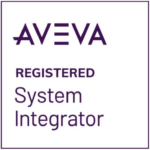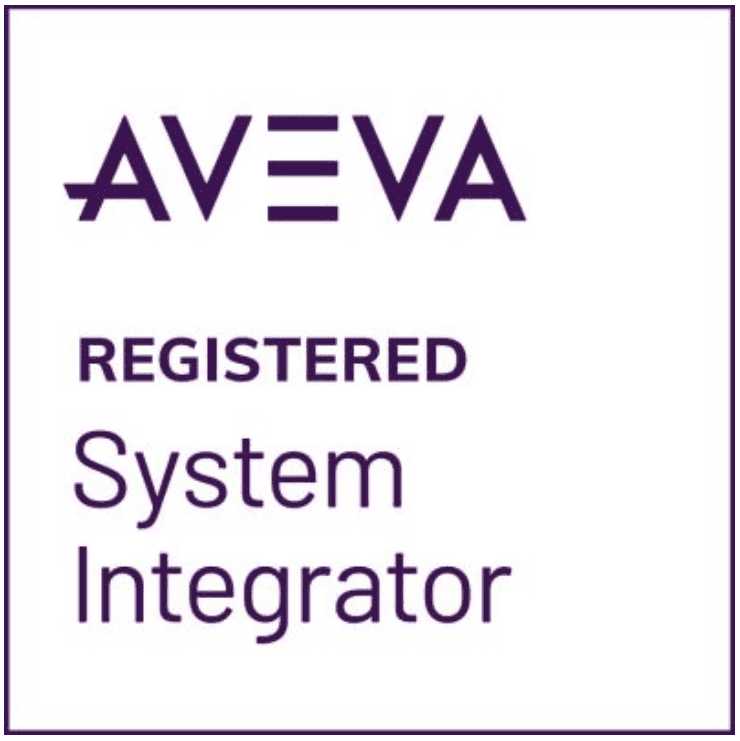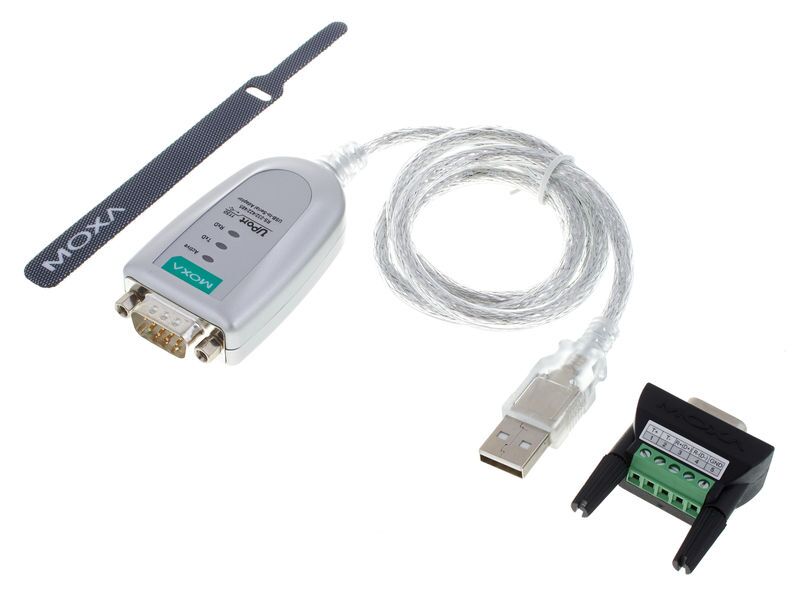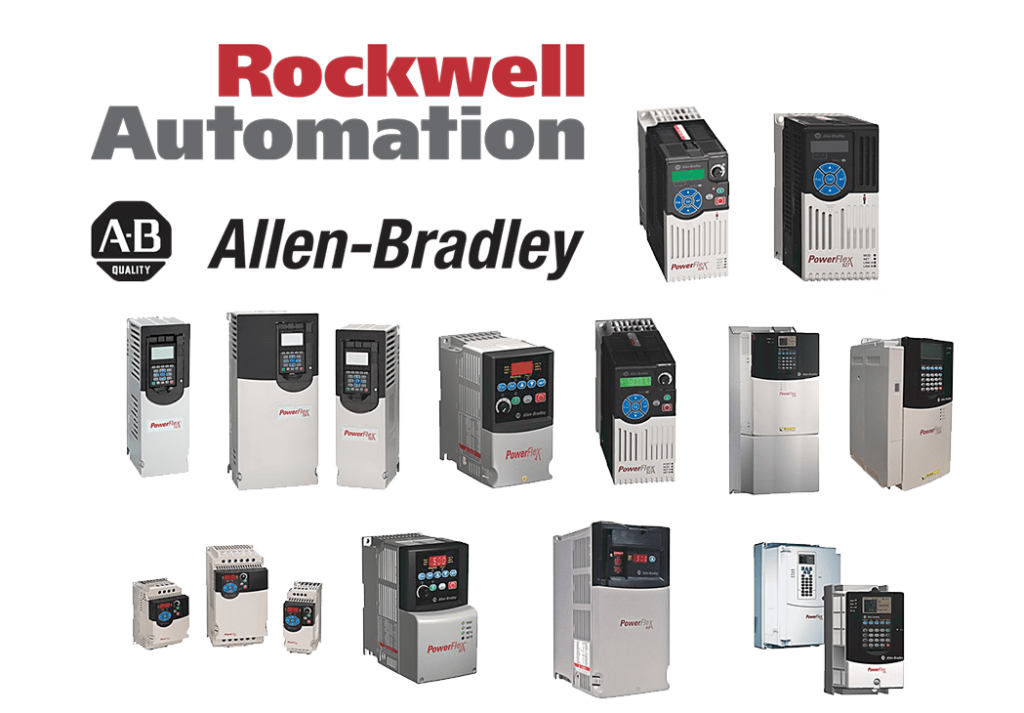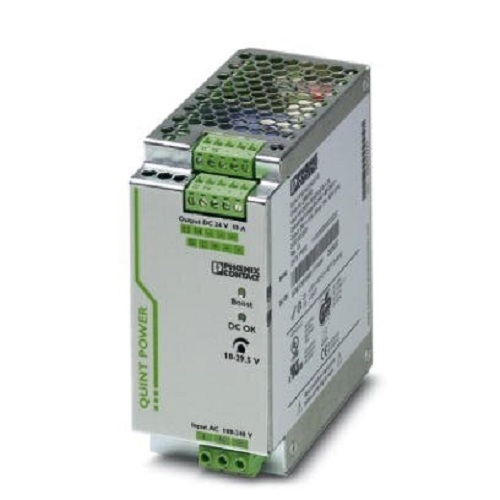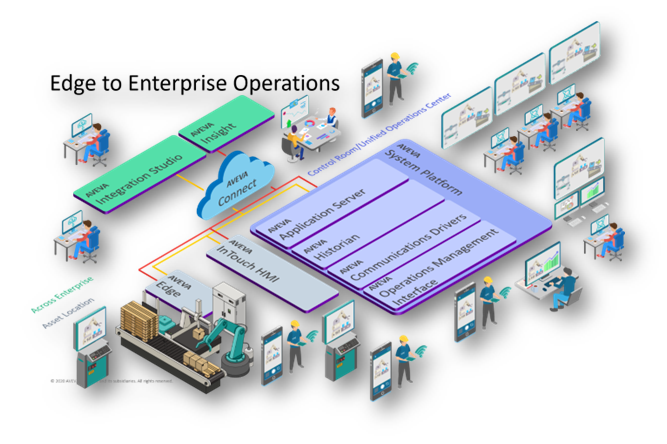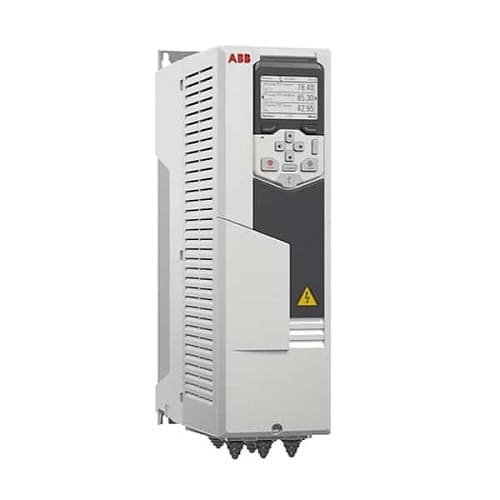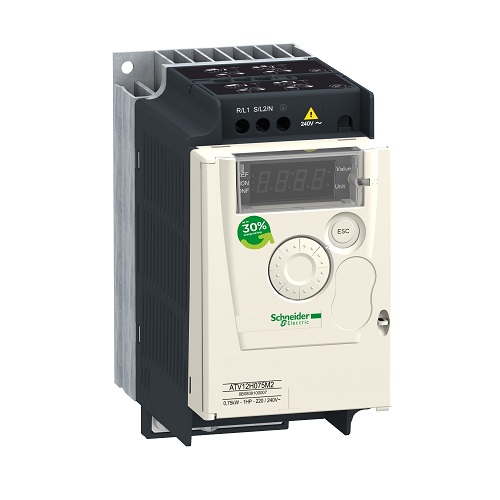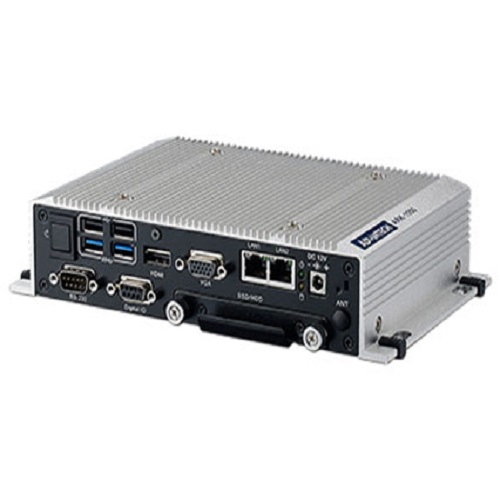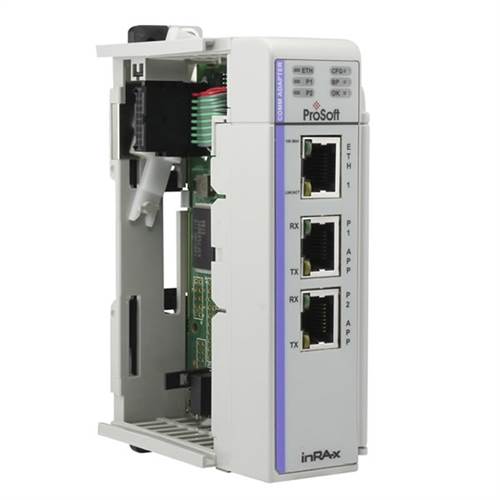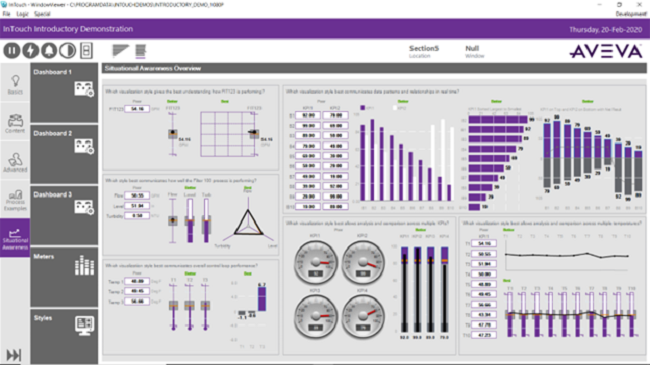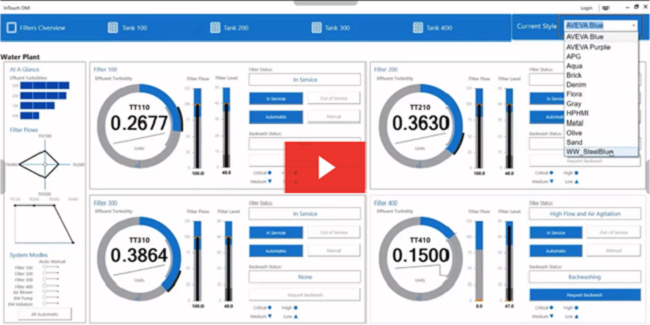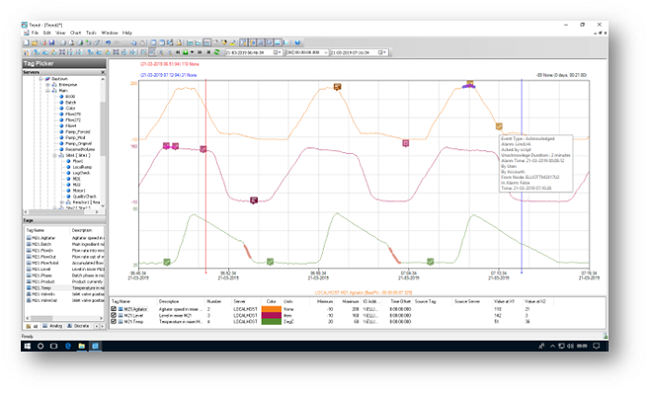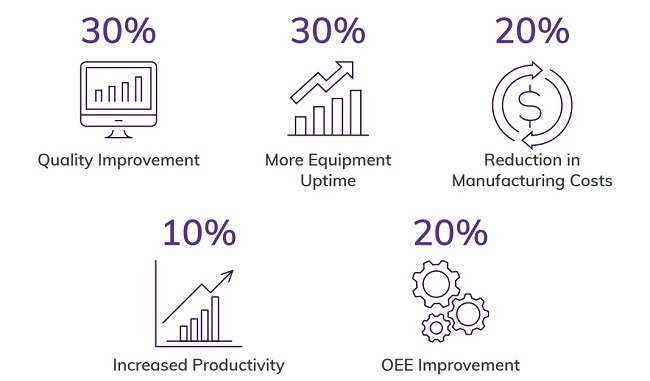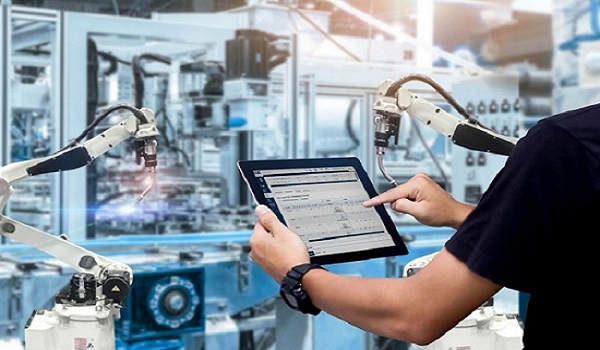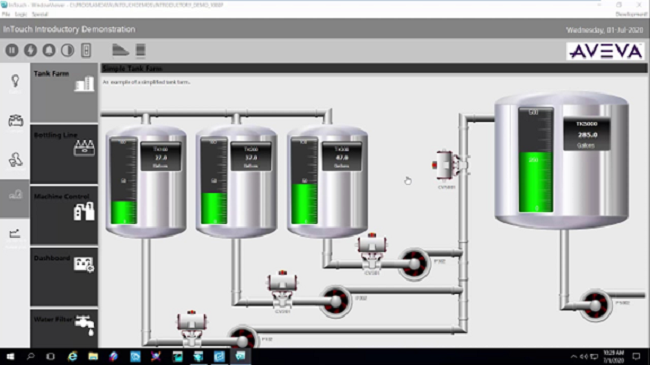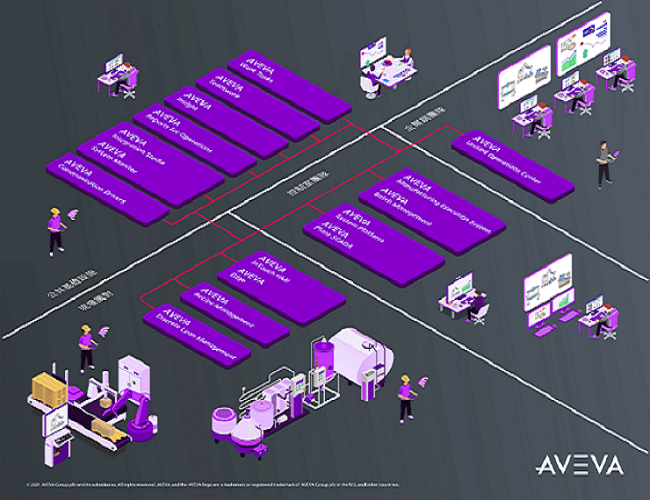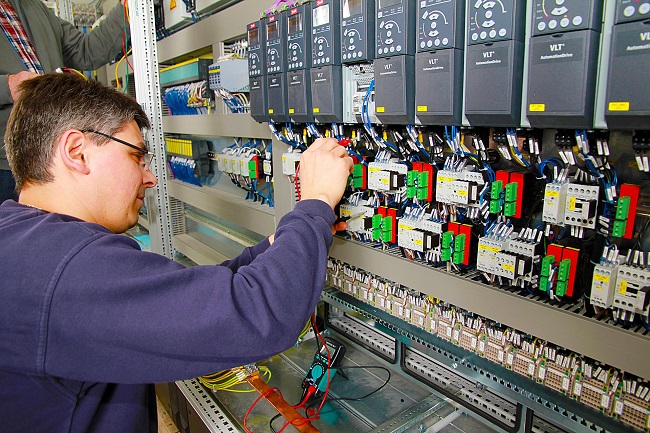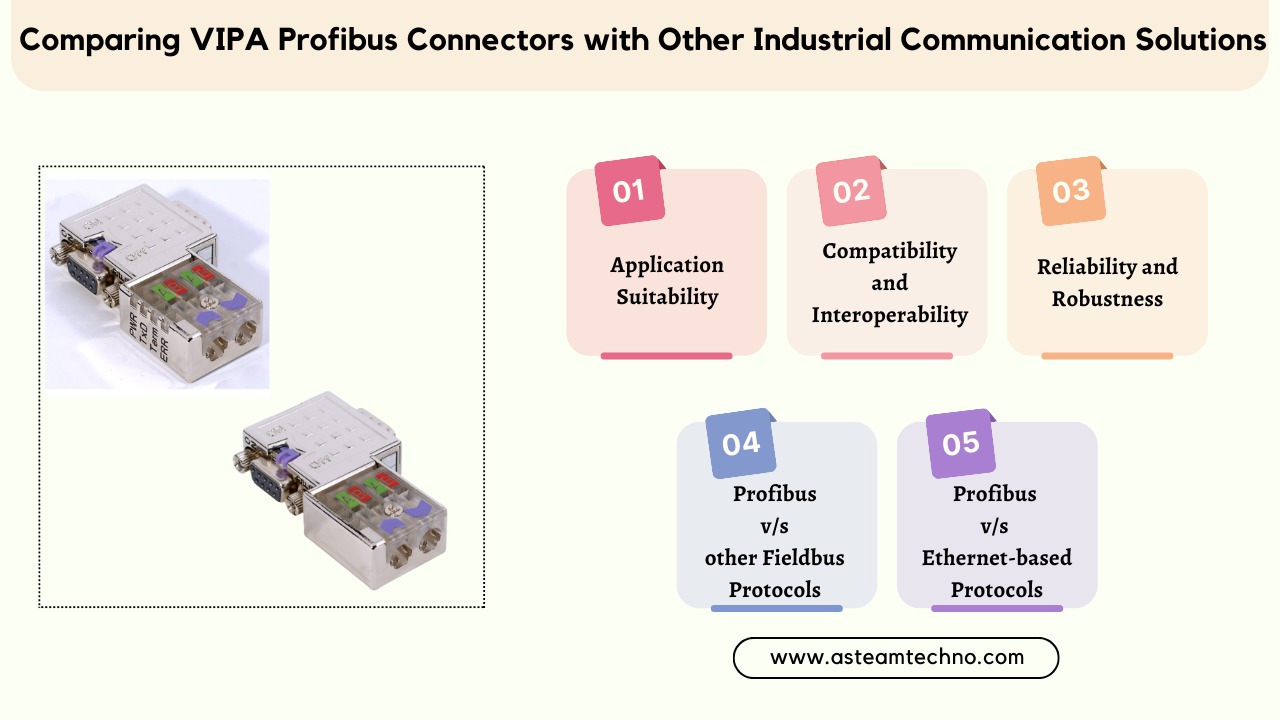When contrasting VIPA Profibus connectors with other industrial communication methods, it is important to take into account a number of different aspects, including functionality, performance, compatibility, and application applicability.
1. Profibus vs. other Fieldbus Protocols:
One of the most popular Fieldbus protocols in industrial automation is profibus, which is renowned for its adaptability and dependability. Based on the particular needs of your application, you should take into account variables like data transfer speed, network topology, and device compatibility when contrasting VIPA Profibus connectors with connectors for other fieldbus protocols like Modbus, DeviceNet, or CANopen.
- Modbus: Popular fieldbus protocol known as Modbus is used for device-to-device communication in industrial automation. Although Profibus and Modbus are both commonly used, there are notable distinctions between them. Because Profibus provides faster data transfer rates, it is appropriate for applications with greater bandwidth needs. Contrarily, Modbus is more easily implemented and frequently utilized for smaller-scale applications.
- DeviceNet: Fieldbus protocol called DeviceNet is primarily used to link industrial devices, sensors, and actuators together in a network. Compared to DeviceNet, Profibus provides faster data speeds and a wider range of device compatibility. DeviceNet is frequently utilized in simpler systems with fewer devices, while Profibus is frequently favored for larger and more complicated applications.
2. Profibus vs. Ethernet-based Protocols:
While Ethernet-based protocols like Ethernet/IP, Profinet, or EtherCAT are frequently used for industrial communication, VIPA 972-0DP20 Profibus connector operates on a Fieldbus protocol. Higher data transfer rates, real-time functionality, and IT system integration are all features of Ethernet-based protocols. The extent of integration with enterprise systems, network infrastructure, and application needs all influence whether to use Profibus or Ethernet-based protocols.
- Data Transfer Speed: In comparison to Profibus, Ethernet-based protocols like Profinet or EtherCAT offer faster data transfer rates. Ethernet-based protocols make use of the Ethernet technology's speed and bandwidth capabilities, enabling quicker communication and real-time data exchange. Despite its dependability, Profibus has slower data transfer rates.
- Network Topology: When using Profibus, numerous devices are often connected in a linear or branching manner using a single data connection. On the other hand, devices connected to a central Ethernet switch form the basis of most switched or star topology-based protocols that use Ethernet. This enables network topologies that are more adaptable and scalable.
3. Reliability and Robustness:
VIPA Profibus connectors are known for their reliability and robustness in industrial environments. When comparing with other industrial communication solutions, it is important to assess factors such as noise immunity, resistance to environmental factors, and the ability to operate in harsh conditions.
- Reliability: In industrial settings, Profibus is renowned for its dependability and robustness. It has a long history of widespread use and a reputation for dependability. Even in challenging industrial environments with electrical noise and interference, Profibus uses dependable error detection and repair algorithms to provide reliable data transfer.
- Robustness: The difficulties of industrial environments, such as temperature changes, humidity, vibration, and electromagnetic interference, are made to be overcome by Profibus. To guarantee reliable communication even in challenging circumstances, it makes use of strong physical layer standards and connectors. Additionally, Profibus cables and connections frequently have mechanical stress resistance to guarantee long-term dependability.
Ethernet-based protocols have also made significant advancements in reliability and robustness. Industrial Ethernet protocols, such as Profinet and EtherNet/IP, incorporate features like redundancy, fault tolerance, and network diagnostics to enhance reliability. However, Ethernet-based protocols may require additional measures, such as proper cable shielding and grounding, to mitigate the impact of environmental factors and ensure robust communication.
4. Application Suitability:
Each industrial communication solution has advantages and is best suited for particular tasks. While Ethernet-based protocols are favoured for high-speed data transfer and integration with IT systems, Profibus is frequently chosen for applications that call for connectivity with a variety of field equipment. The selection of a communication solution will depend on the particular requirements of your application, such as device compatibility, network topology, and scalability.
- Profibus: Particularly in the manufacturing and process industries, Profibus is highly suited for a variety of industrial automation applications. Applications including factory automation, machine control, motion control, and process control frequently employ it. Profibus is appropriate for time-sensitive applications because it has strong communication capabilities, such as deterministic data transfer and real-time control.
- Ethernet-based Protocols: Profinet, EtherNet/IP, and EtherCAT are a few Ethernet-based protocols that are frequently used in industrial automation and have advantages in some applications. For instance, Profinet is frequently chosen for high-speed communication applications like dispersed control systems and synchronized motion control. Since EtherNet/IP is based on Ethernet, it can easily be integrated with IT systems and business networks. Applications requiring lightning-fast and synchronised control of distributed devices are where EtherCAT shines.
5. Compatibility and Interoperability:
Comparing communication options requires consideration of compatibility with current systems and equipment. The Profibus devices and networks are compatible with VIPA Profibus connectors. It is crucial to take into account the accessibility of suitable hardware, the simplicity of integration, and the interoperability with other pieces of technology or systems used in your application.
In conclusion, comparing VIPA Profibus connectors with other industrial communication solutions entails assessing elements including protocol compatibility, performance requirements, suitability for particular applications, dependability, and compatibility with current systems. To choose the best communication solution for your industrial automation needs, it is crucial to carefully evaluate the unique requirements of your application and speak with specialists or manufacturers.
If you are looking for any Industrial Automation solutions reach us at contact@asteamtechno.com for
Support | Solution | Inquiry | Upgradation | Modification

